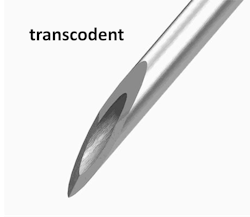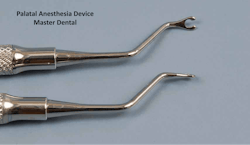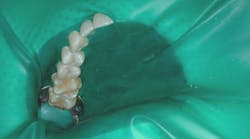Each month, Dr. Gordon Christensen answers a question from readers about everyday dentistry.
Q: After practicing for many years, I still find most patients are afraid of local anesthetic injections. I do my best to make injections as painless as possible, but I still fail frequently. What techniques could I do better to reduce my patients’ fear and anxiety about this routine procedure?
A: You are not alone! All of us have had the same feelings you expressed. Some have overcome the problem while others have not. Numerous practice management authorities state that one of the most important reasons patients like a dentist is the dentist’s known ability to consistently deliver painless injections. I am happy to share my own experience relative to how to deliver painless injections, as well as several additional concepts and devices that can aid in this important task.
Your demeanor calms or excites the patient
Your personality and demeanor are important in developing a calm, peaceful, and pleasant environment for your patients. This type of calming is known as iatrosedation, and it can be produced by your chairside behavior, audio analgesia, hypnosis, acupuncture, peaceful music, virtual reality, and other relaxing factors. Many dentists use distracting methods when delivering local anesthetic, such as jiggling the lip, pinching the lip in a site distant from the injection, or other distractions.
If you rush into the operatory, briefly say hello to the patient, rapidly deliver a local anesthetic without telling them about what you are doing, and then disappear without conversing with the patient or telling them when you will return, you have probably delivered a painful injection.
If you enter the operatory and greet the patient cheerfully, explain what is planned for that appointment, and ask if they have any questions, you have already calmed them somewhat. Now comes the dreaded injection. I suggest the following interaction to calm the patient before the injection.
- It is better to overeducate the patient than undereducate them concerning the injection.
- Describe the profound and effective anesthesia provided by current local anesthetics.
- Place a topical anesthetic on the injection site after showing the patient the material and explaining that it is a superficial anesthetic. Let it produce an anesthetic result for about one to two minutes before injecting.
- If the injection is in the mucobuccal fold, jiggle the lip as the needle slowly and gently penetrates the soft tissue.
- If the injection is on the palate, use pressure on the injection site. I will describe this more later.
- If the injection is an inferior alveolar block, start slowly injecting as soon as the needle penetrates the soft tissue, and continue slowly injecting until the needle gently stops on bone.
- Wait at least five minutes and ask the patient to indicate where they feel numb before starting any potentially painful procedure.
Products that aid in producing a painless injection
Buffering the anesthetic solution
Commonly used local anesthetics are acidic, often producing an immediate sting when injected too rapidly. Buffering local anesthetics is routinely used by many other medical specialties but has not been done frequently in dentistry. Placing a small amount of sodium bicarbonate in the local anesthetic speeds its return to the physiologic pH of 7.4, and anesthesia is almost immediate for the patient.
This characteristic is great, but it requires a behavior change on the part of the dentist. Dentists are accustomed to injecting local anesthetic and then going to do a dental hygiene check or other task while the anesthetic takes effect. When the anesthetic is buffered, there is no waiting period. Treatment can start almost immediately after injection, and dentists soon adapt to this change in process.
Buffering reduces patient pain from injections. It saves clinical time and reduces some unpredictable aspects of local anesthetic delivery since the anesthesia begins immediately. It is well known that most dentists make more than one attempt to develop a profound inferior alveolar block, and buffering reduces this time loss. When buffering, the patient has immediate knowledge that the anesthetic is or is not working.
Onset by Onpharma (figure 1) is among the fastest, easiest, and most effective ways to buffer local anesthetics for dental treatment.
A needle is not a needle
If you look closely at the needle in Figure 2 (Transcodent), you will note that it has bevels on its tip. Several companies are producing beveled needles. Such needles slowly penetrating the slightly numb soft tissue (from previously mentioned topical anesthetic) can produce a nearly imperceptible entry for the needle. A beveled needle is not just a pointed open lumen that produces a round hole such as a donut hole.
Are you injecting too rapidly?
At some time in your life, you have probably experienced a health practitioner rapidly injecting and squirting the solution into you within seconds. Did you feel it? Of course you did. Your soft tissue was bloated, stretched, and potentially ripped apart. How fast is too fast for dental injections?
The Dentapen (figure 3) has three speeds for injections, and you elect the setting you prefer. This device helps to avoid fast injections, thus reducing pain on injection and postoperative pain. If you try it, you will probably be amazed to note that you have been injecting too rapidly. Of course, you could also time yourself by silently counting the injection time to ensure you are not injecting too rapidly.
The palatal injection done properly can be the least painful dental injection
The instrument in Figure 4 (Palatal Anesthesia Device, Master Dental) looks like a target, and that’s exactly what it is. The following technique can produce a painless palatal injection almost every time.
- Place topical anesthetic on the planned injection site and give it time to work.
- Show the patient the instrument or the wooden end of a Q-tip and explain what you are going to do with it.
- Place the instrument (or any other small device that will allow you to place pressure on the palate) in the exact sites you plan to inject.
- Push hard on the site until the tissue blanches almost white.
- Slowly slide the needle down the side of the pressure instrument, and slowly penetrate the soft tissue directly adjacent to the instrument.
- Inject slowly.
- Patients will be amazed that there is no or only minimal discomfort.
Summary
You may be a wonderful clinical dentist, but patients will be hesitant to return to you if your injections are painful. I have provided several excellent techniques and products to help you provide this potentially painful procedure nearly painlessly.
Editor's note: The article appeared in the September 2024 print edition of Dental Economics magazine. Dentists in North America are eligible for a complimentary print subscription. Sign up here.












